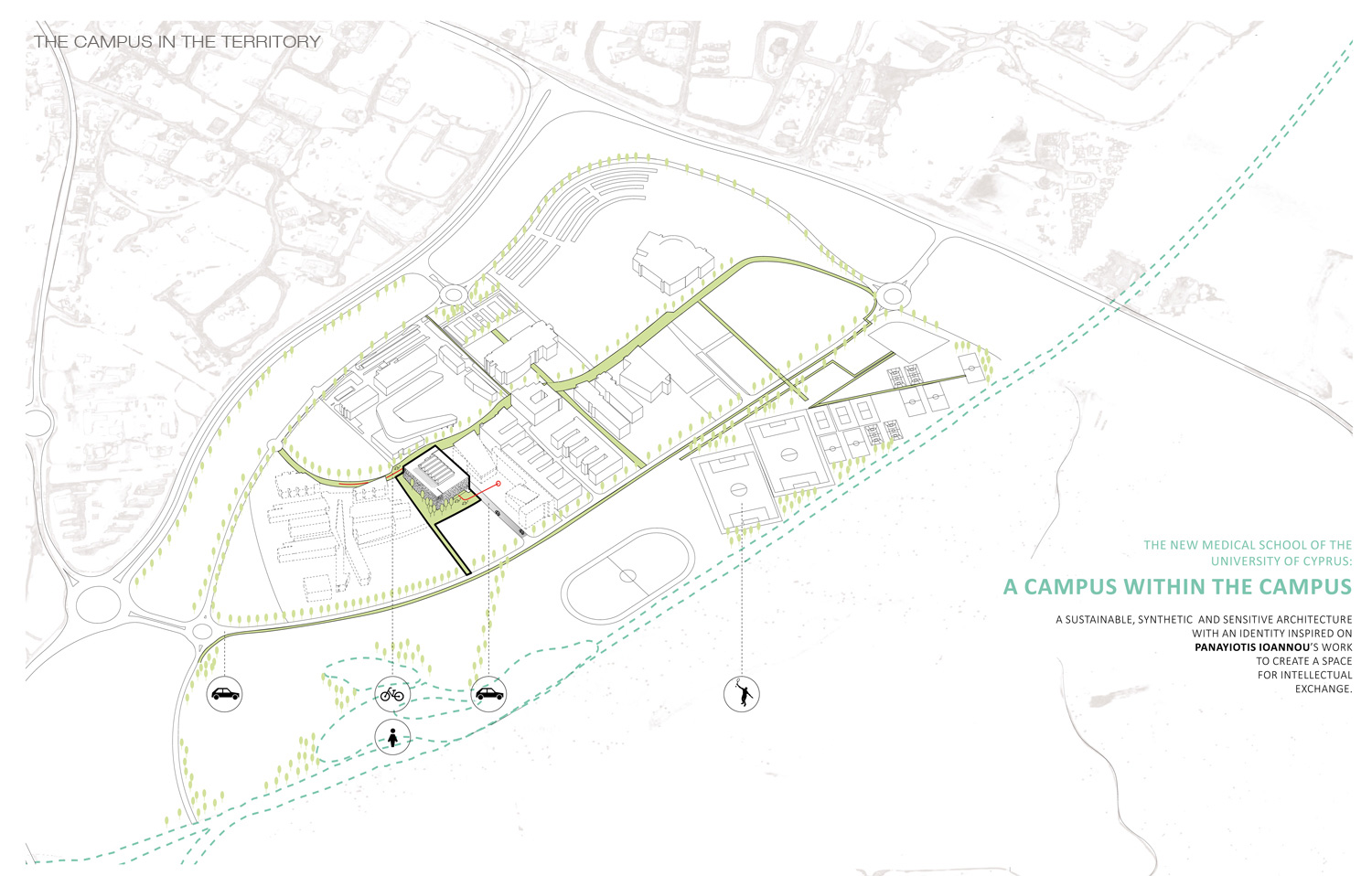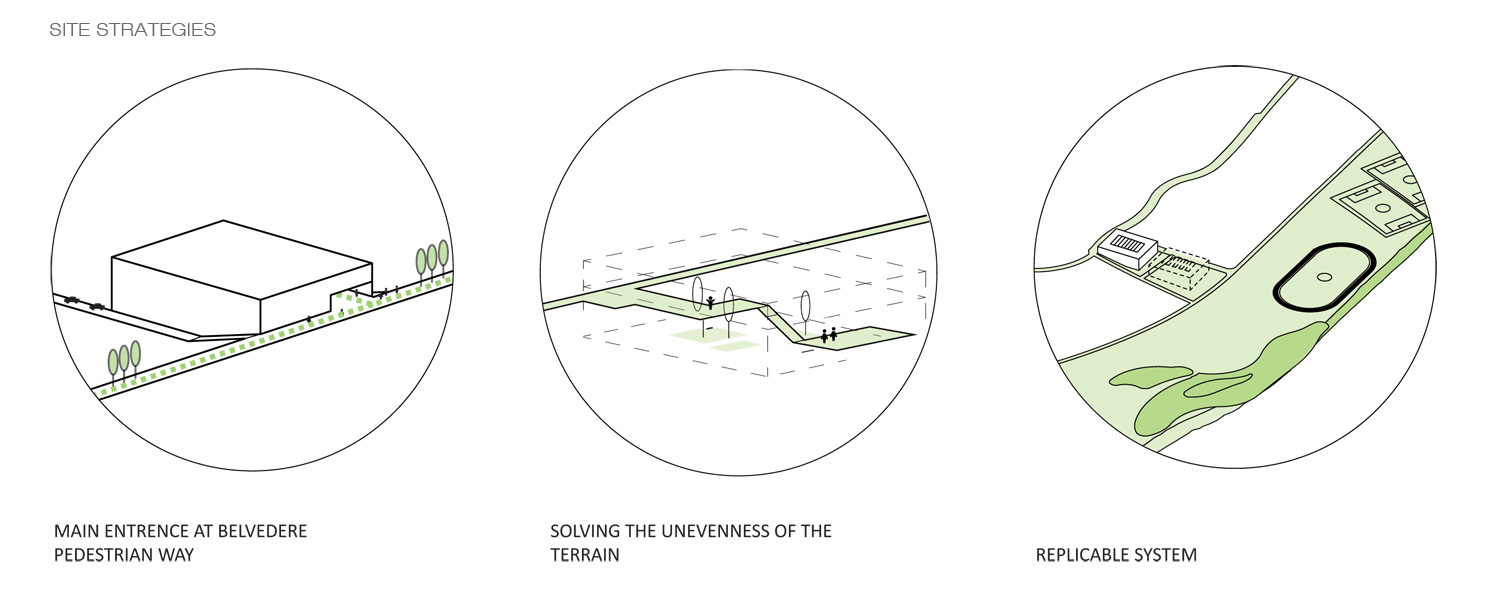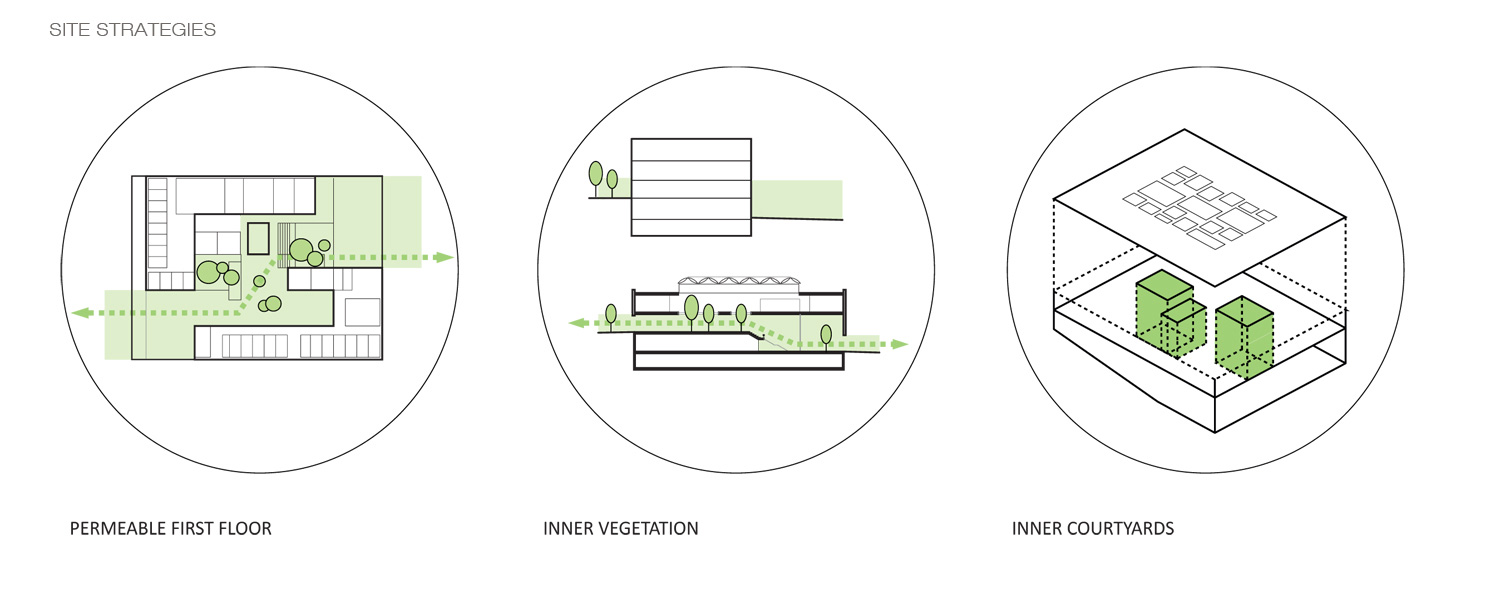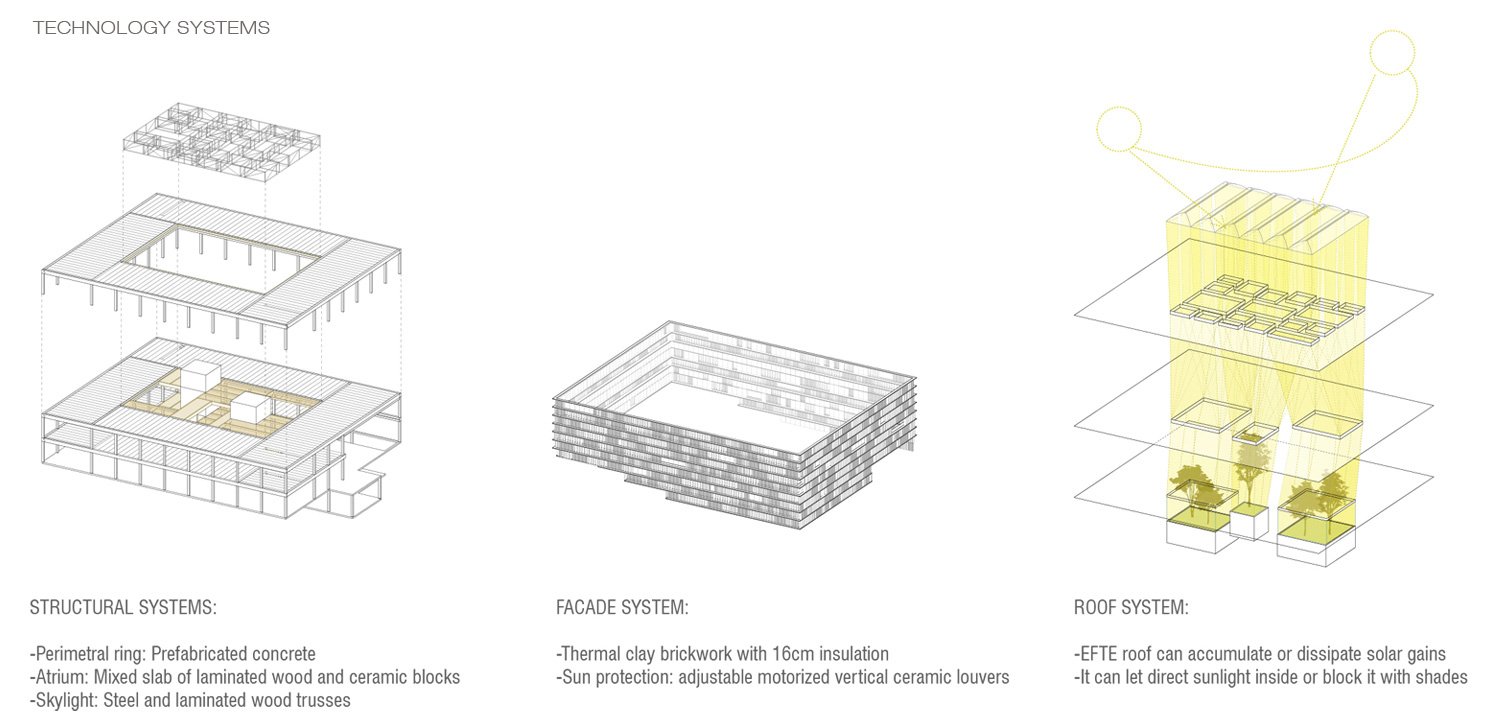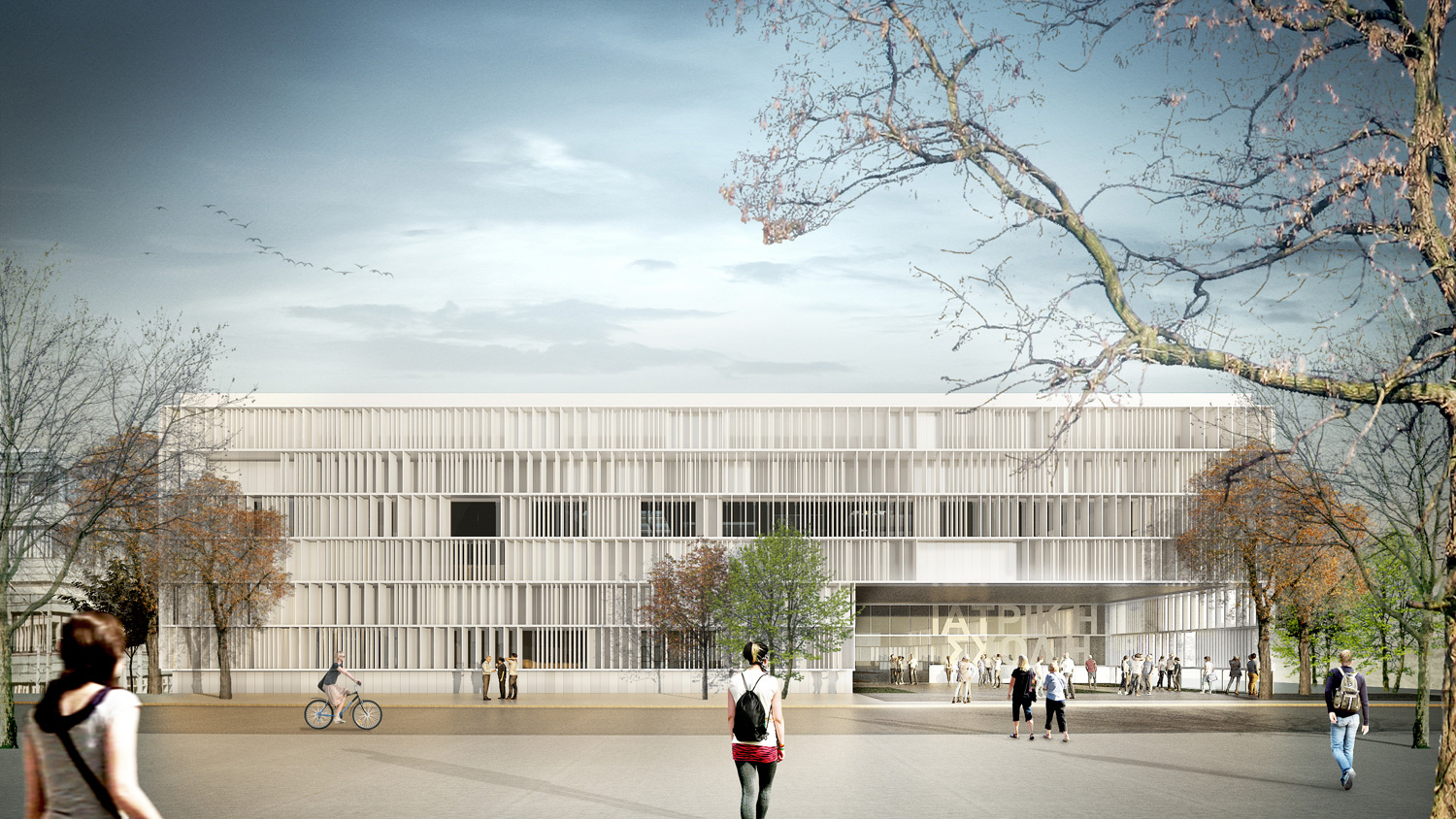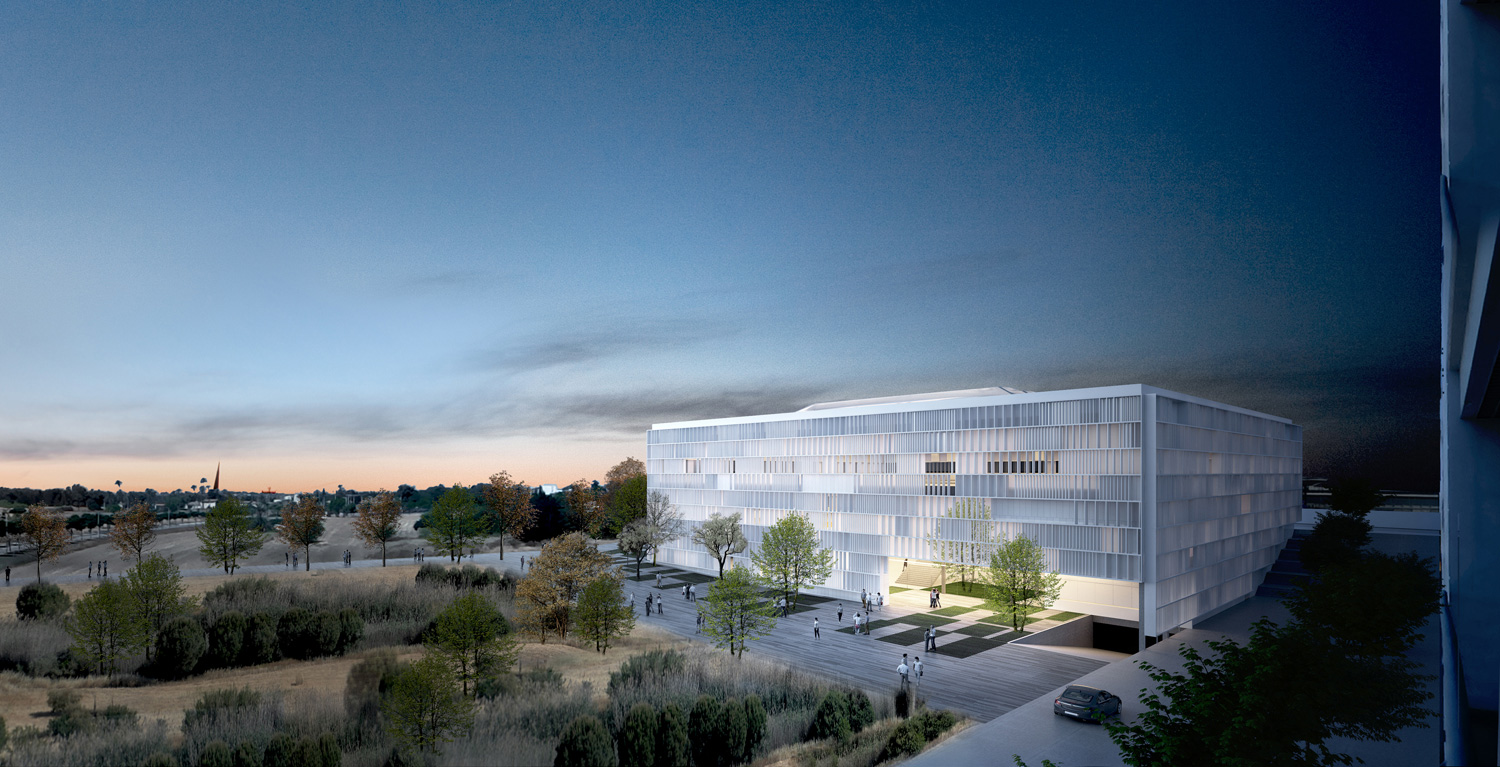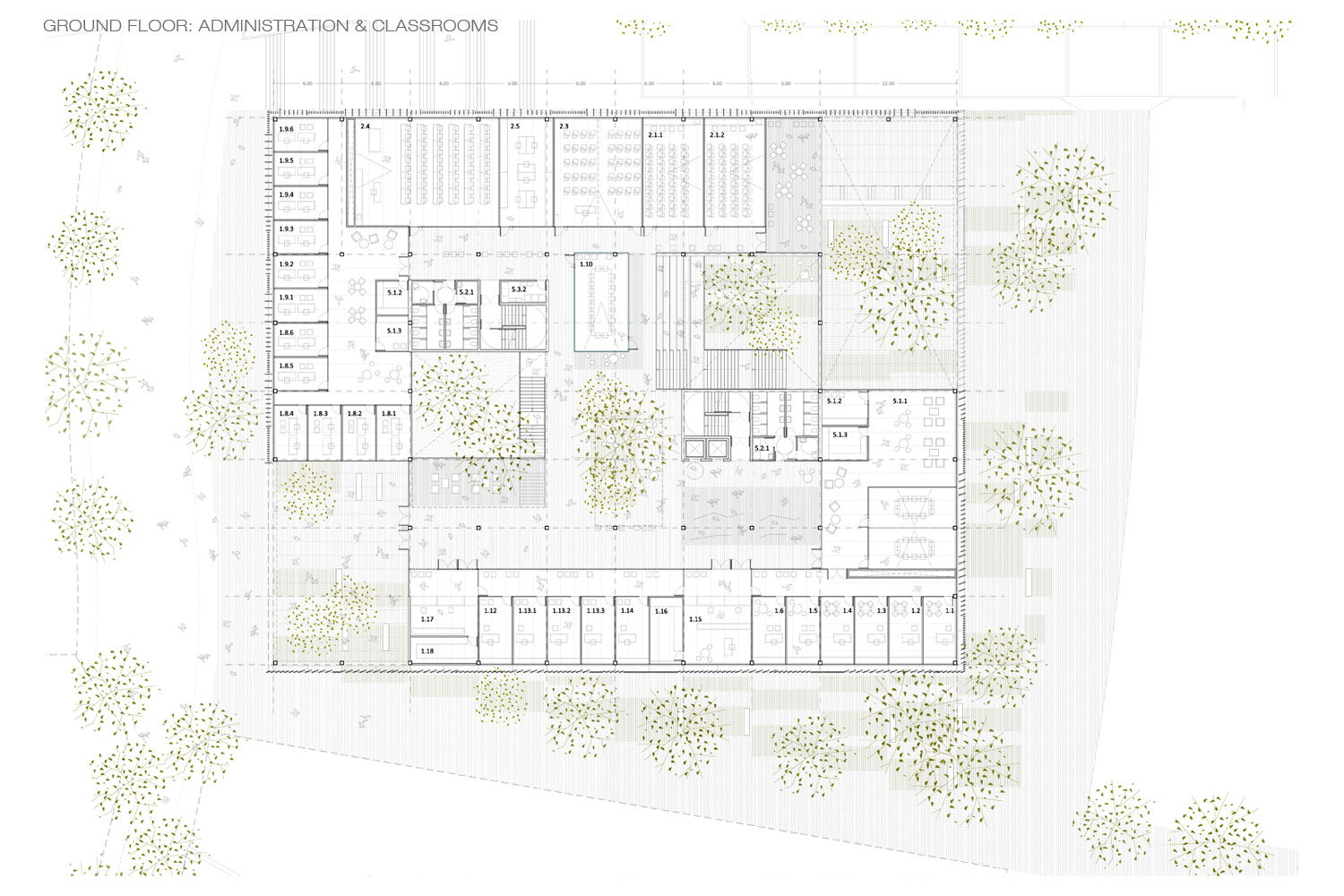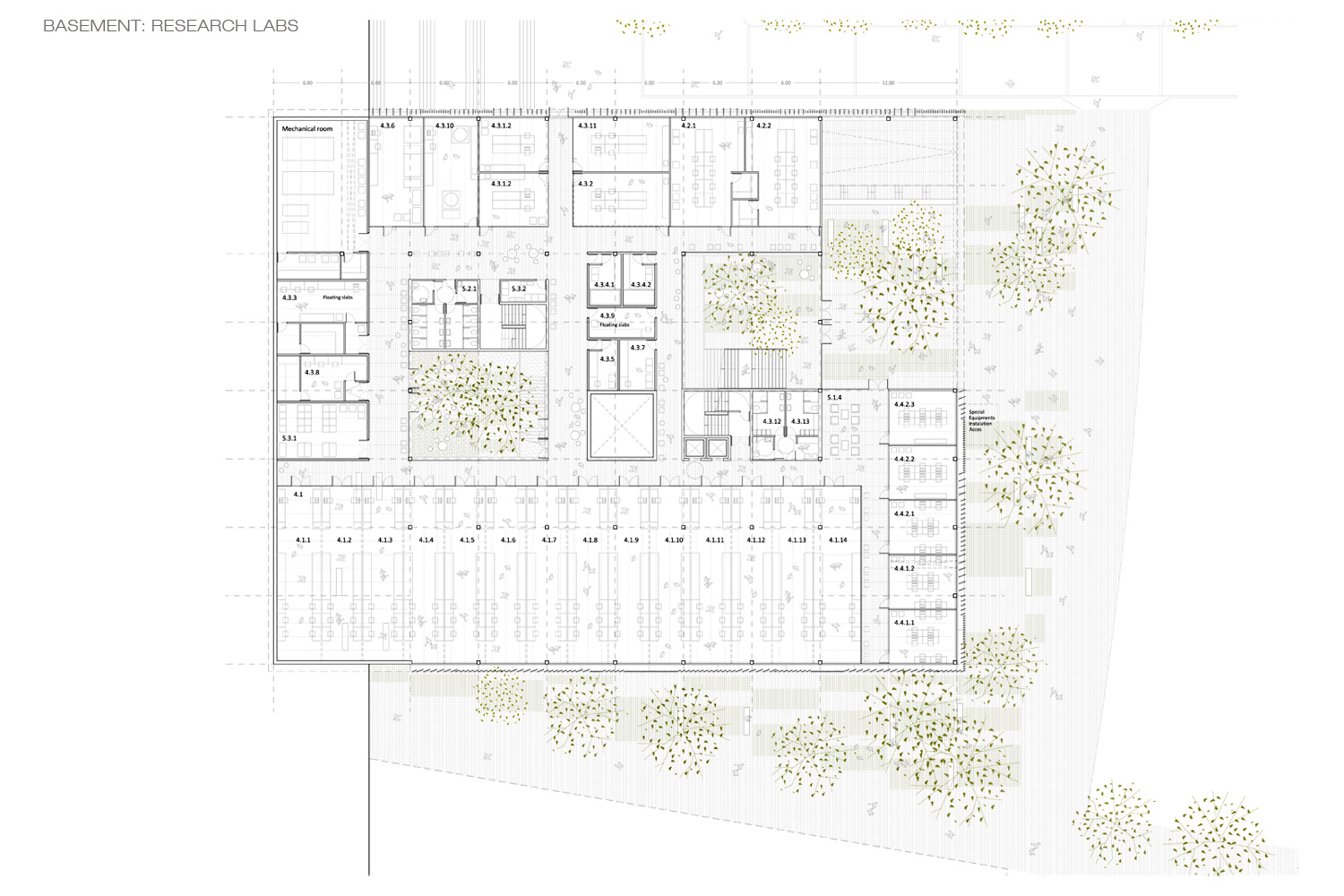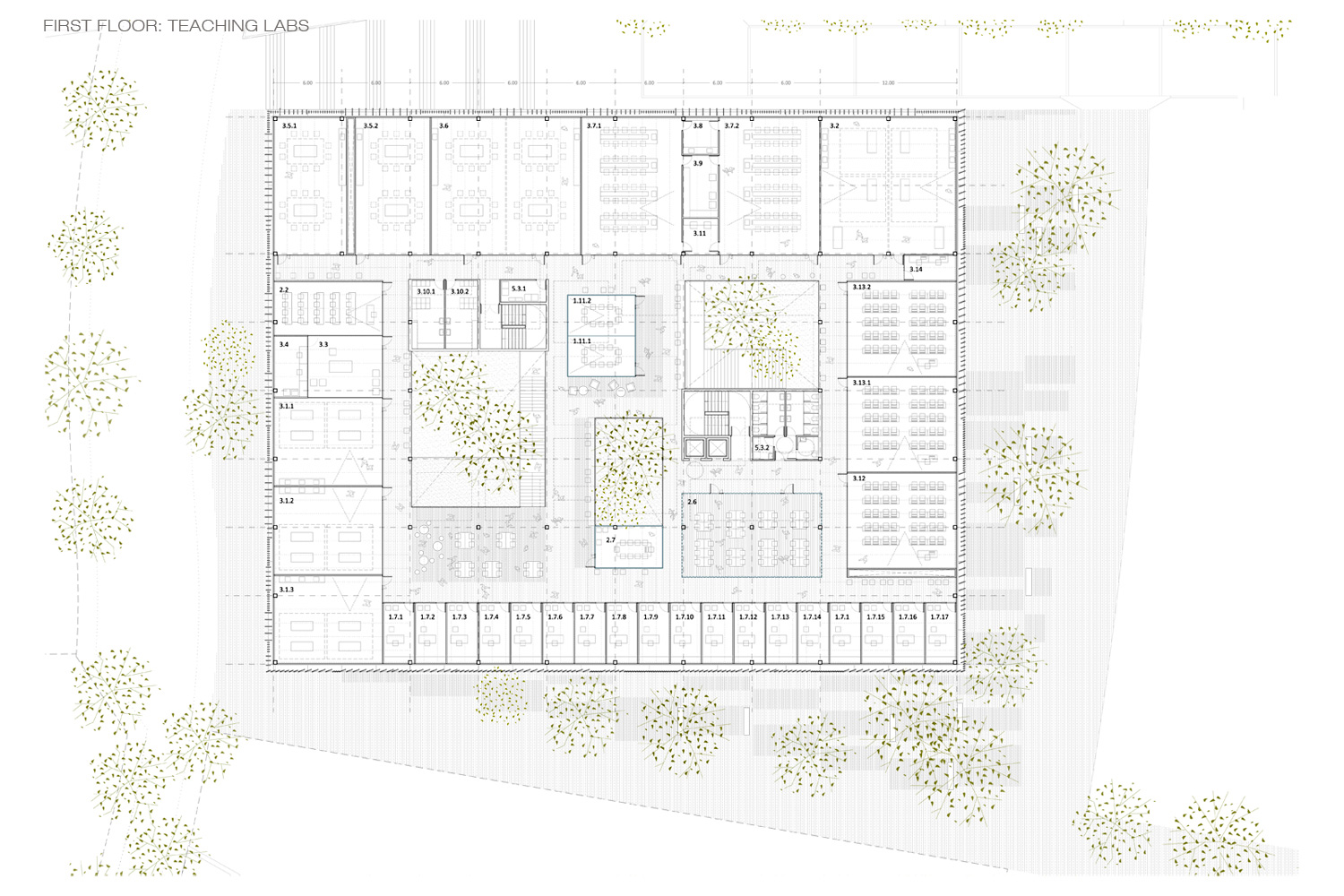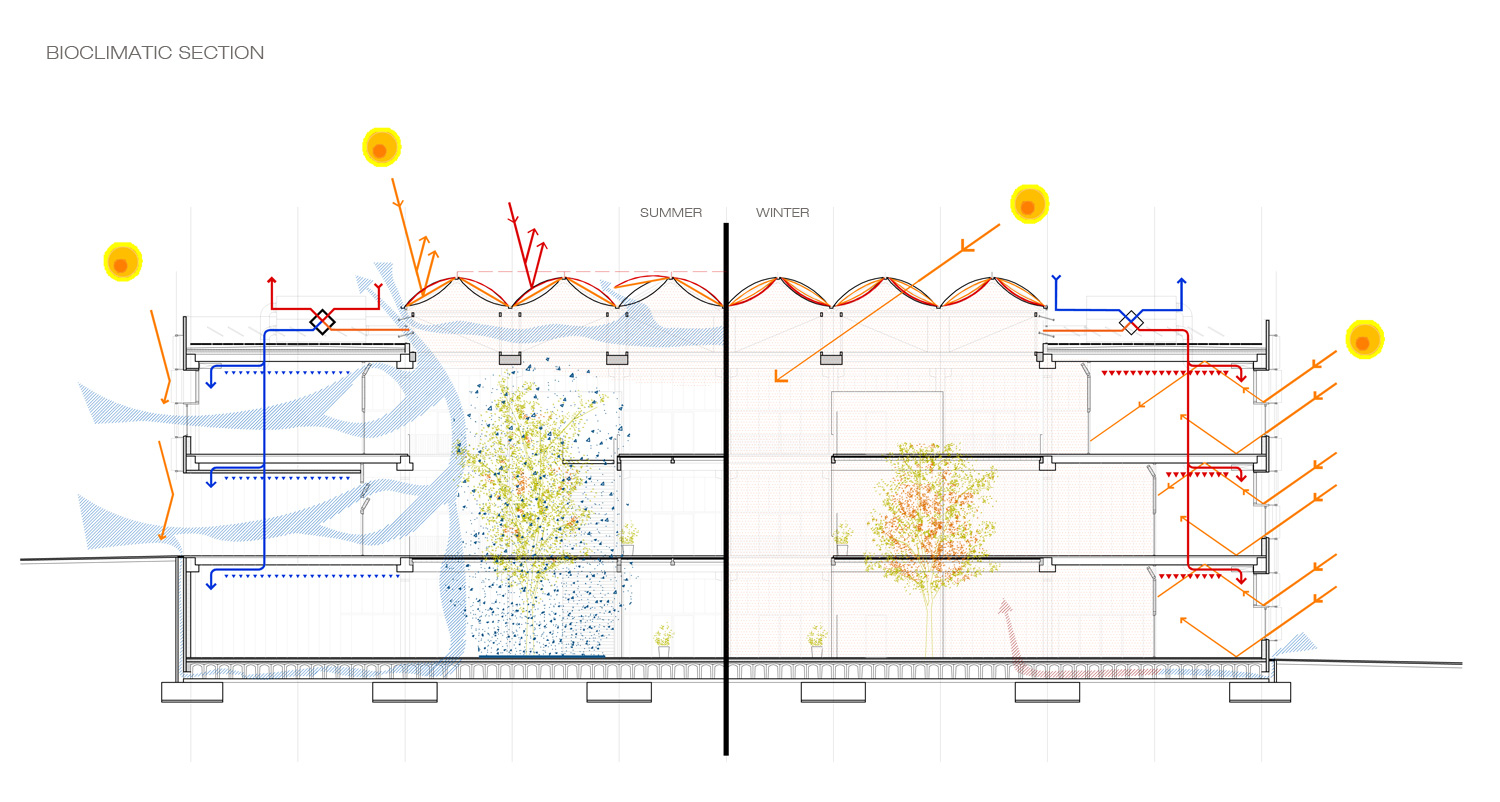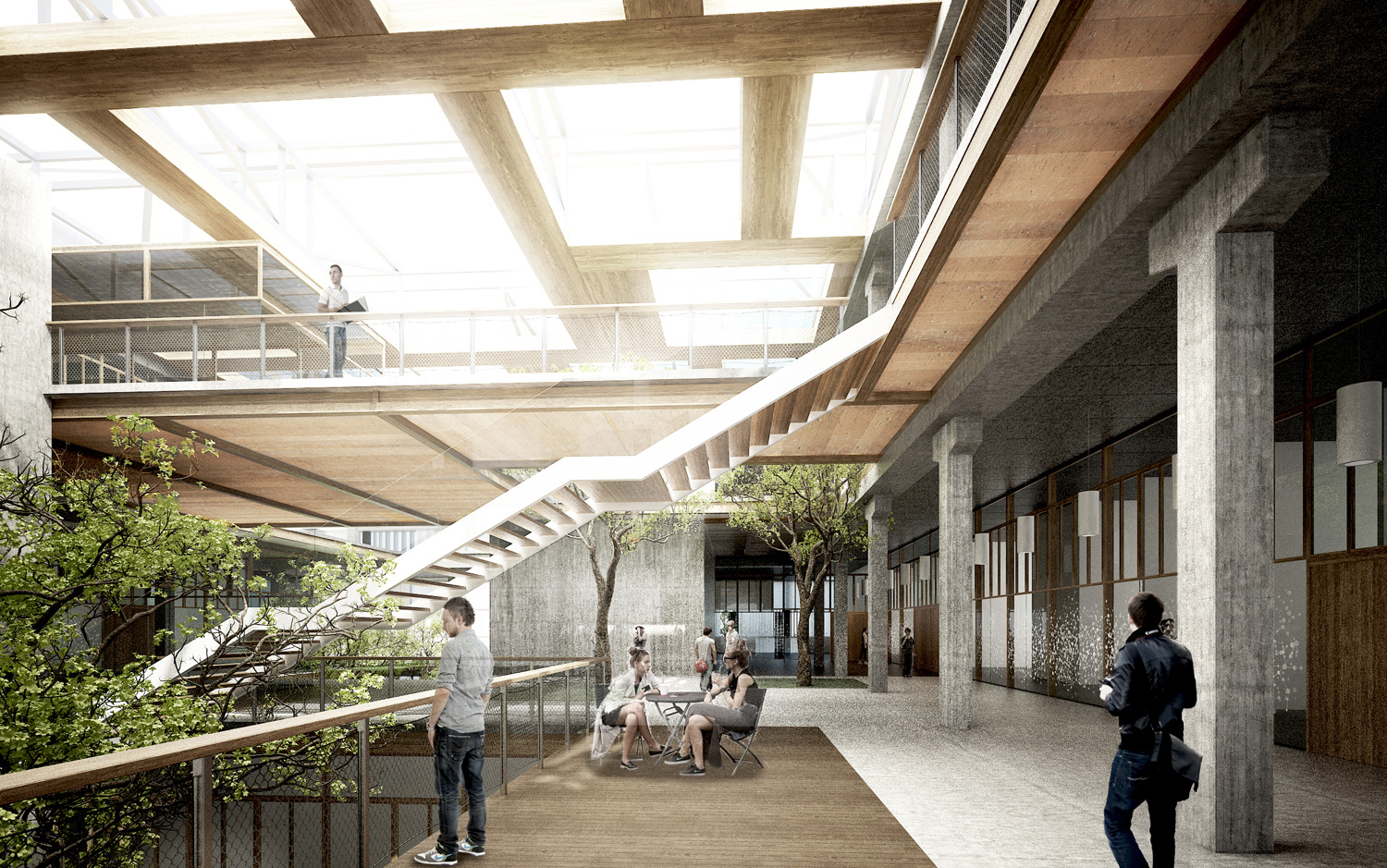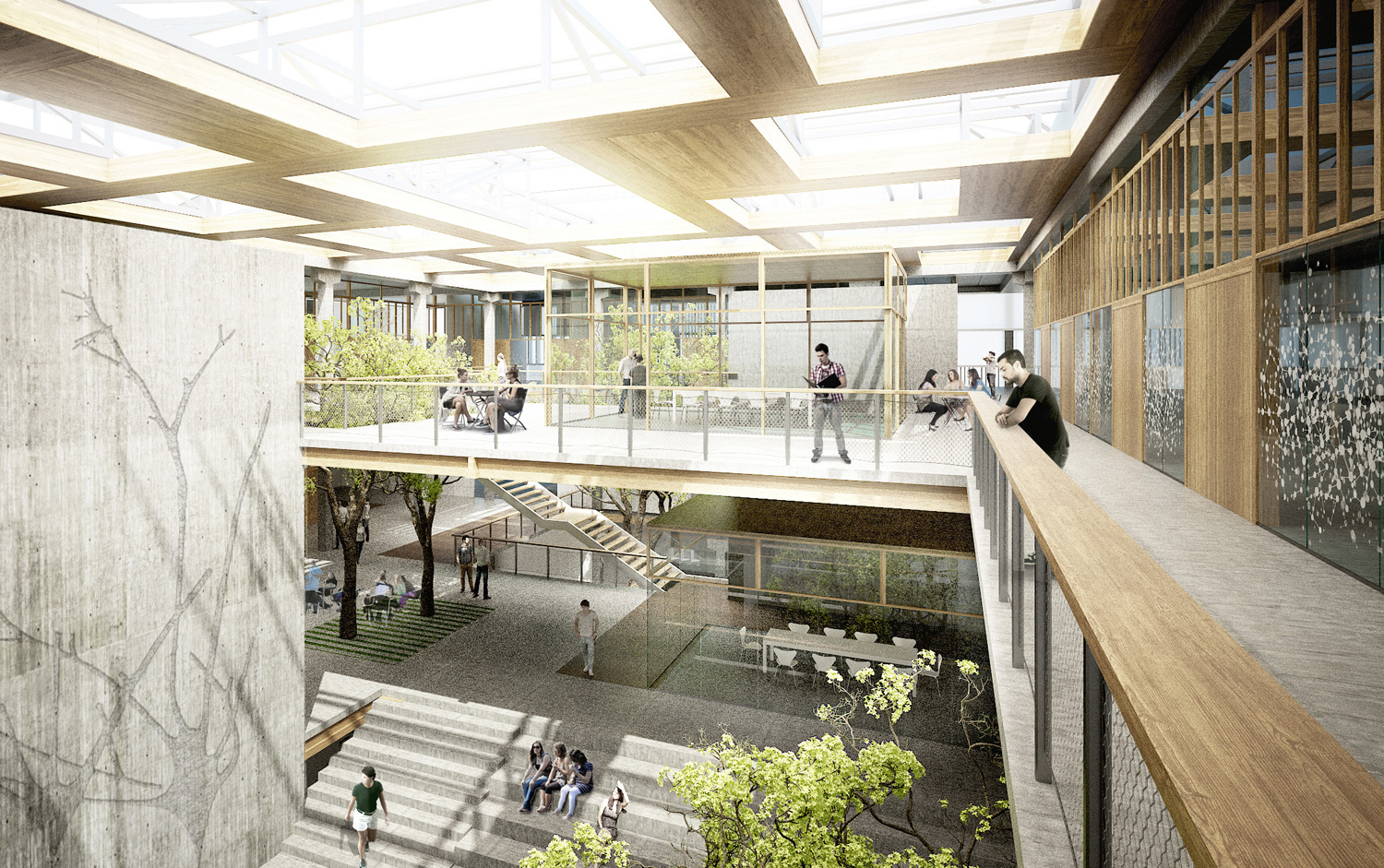1497-MIB-NIC.CY-2015
Client: University of Cyprus
Status: Competition (2015)
Clasification: 2 prize
Location: Nicosia, Cyprus
Coordinates: 35.1922863, 33.3798926
Climate: Hot, Semiarid
Materials: Concrete, Wood
Environment: Urban
Visualizer: Studio
Budget: 13.477.248 €
Scale: 8.487 ㎡ Medium
Ratio: 1.587,99 €/㎡
Types: Education, University
A sustainable, synthetic and sensitive architecture with an identity inspired on Panayiotis Ioannou’s work to create a space for intellectual exchange.
Architectural synthesis
The building typology aims at creating a Campus within the Campus: A space where interaction among students, faculty members and researchers can facilitate debate, creativity and potential fruitful collaborations. A cloister configuration with different programme entities around a central circulation and relational space is the simplest and more effective solution to promote interaction between the different types of population. The central patio is the social core of the building and its bioclimatic lung and regulator.
To know is to decipher
We share Panayiotis Ioannou’s fascination for the mechanism of DNA replication, the cell biologist and neuroscientist born in Cyprus who led the research that created the first human PAC genomic library which has been used extensively for the sequencing of the human genome. Taking the images of an agarose gel electrophoresis of DNA sequencing, and making a not scientific but plastic interpretation of them, we discover bands with sequences of varying size and intensity fragments, which occasionally match. That is a potential compositional system able to continually treat a volume and where variation and contrast generate a rhythm of nuances.
Technological and structural approach
The technological systems are based on standardization, speed and simple construction and provide high thermal inertia.
Bioclimatic building
The energetic proposal will minimize the energetic and water demand. Thanks to the insulation solutions and the automated control of sun protection and natural ventilation system, the demand will be minimal all year long and will drastically reduce the operation cost of the building. Climatic behavior of the building will be monitored and will constantly provide data that will help to improve the automated control and therefore progressively optimize the energy demand.
Sustaiability
‐ Save of 75% of the energy consumption
‐ Save of 90% of the potable water consumption
‐ Save of 60% of the emissions in the fabrication process
‐ Save of 85% of the waste to deposit
‐ 89% materials with full life cycle
